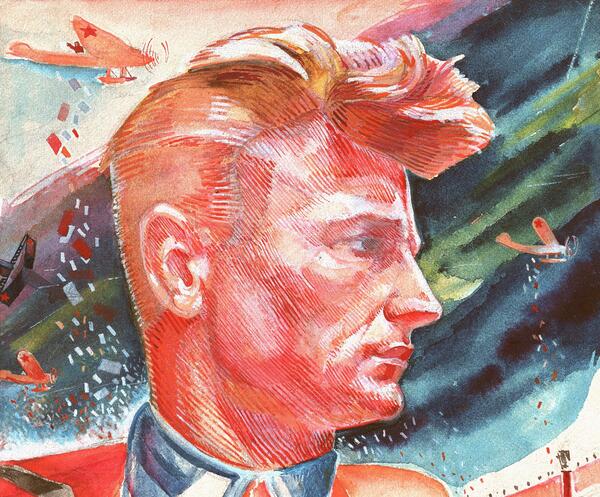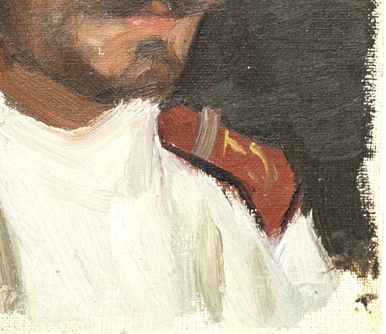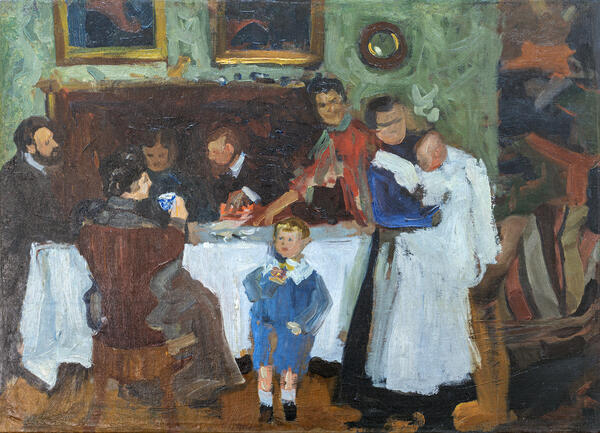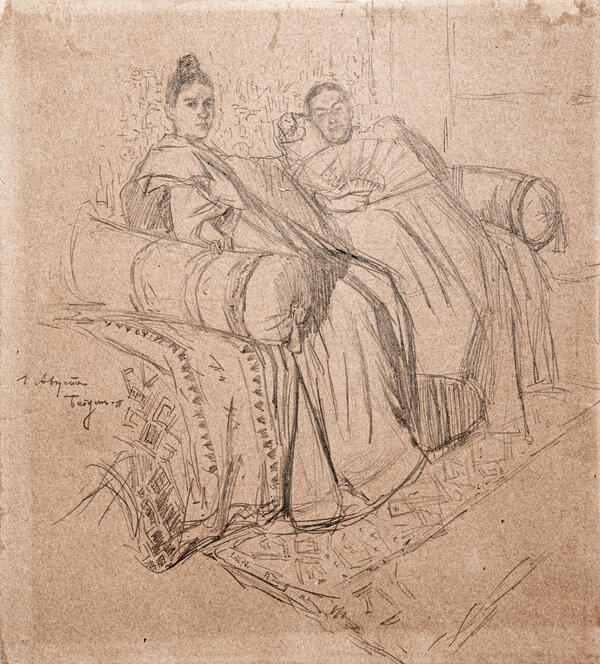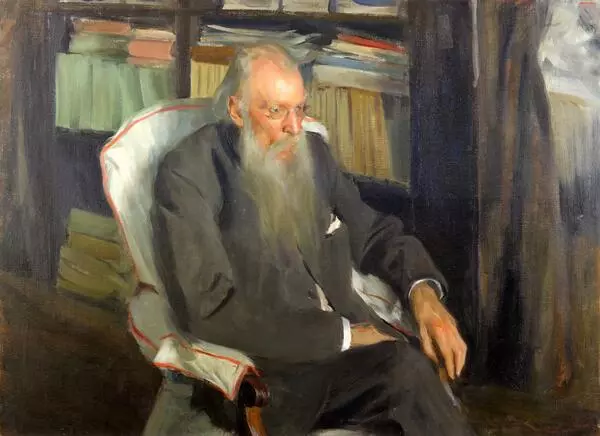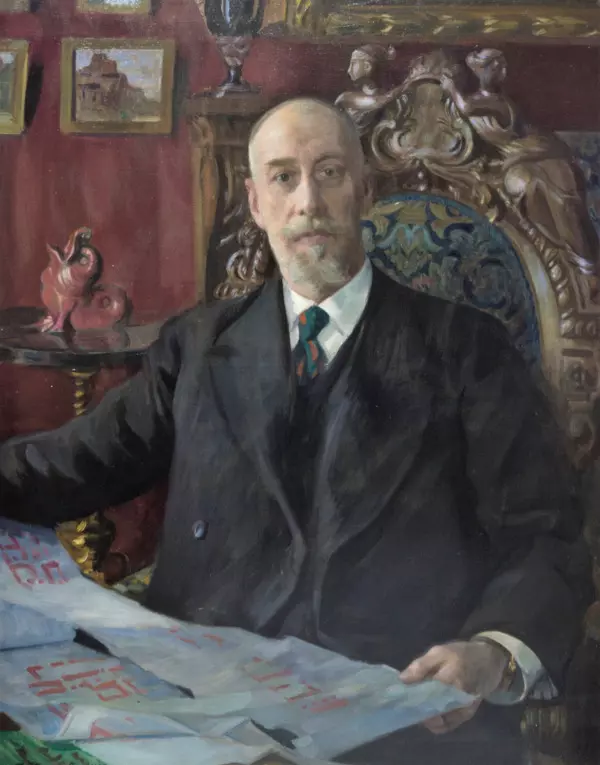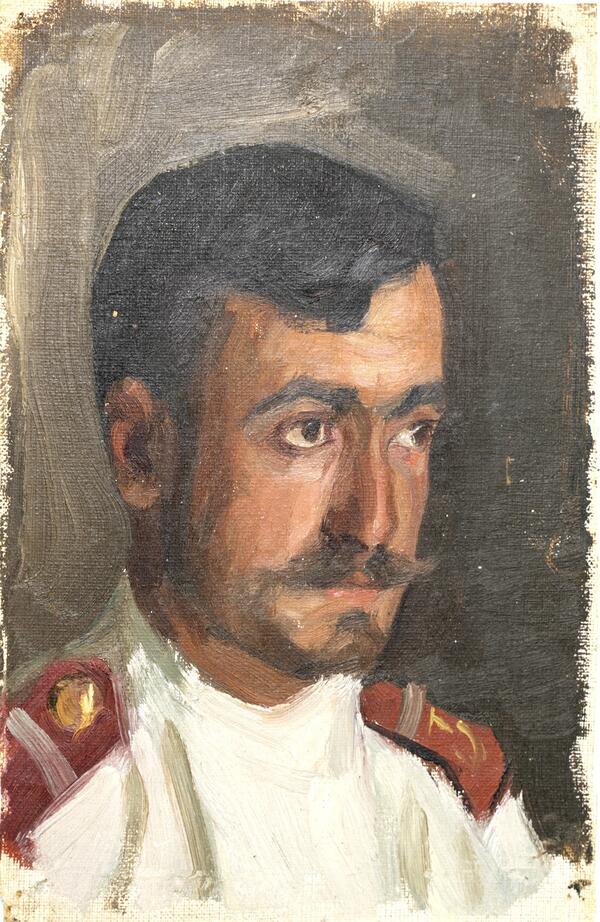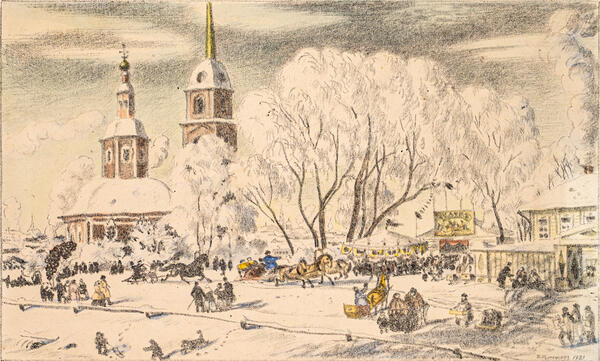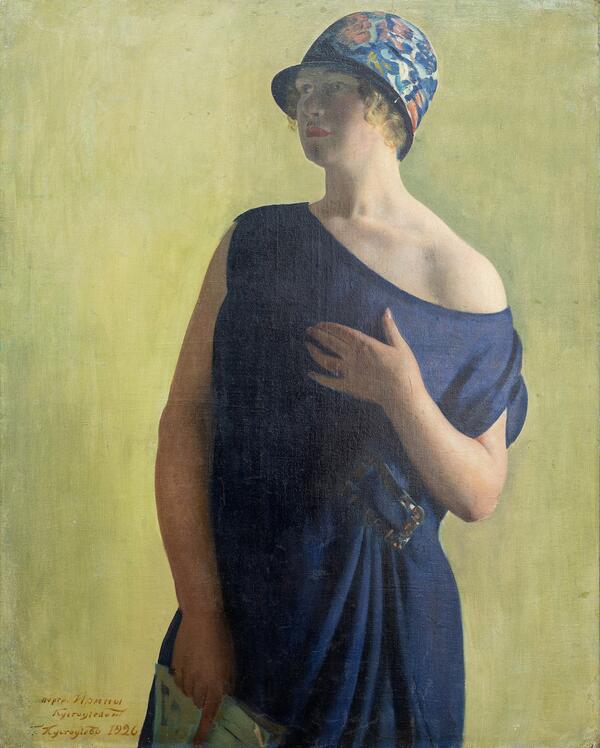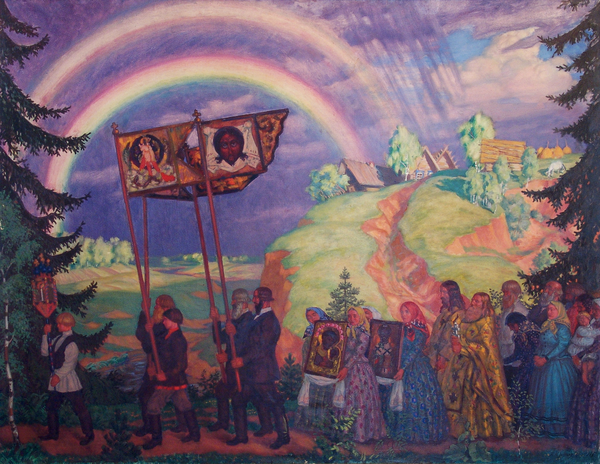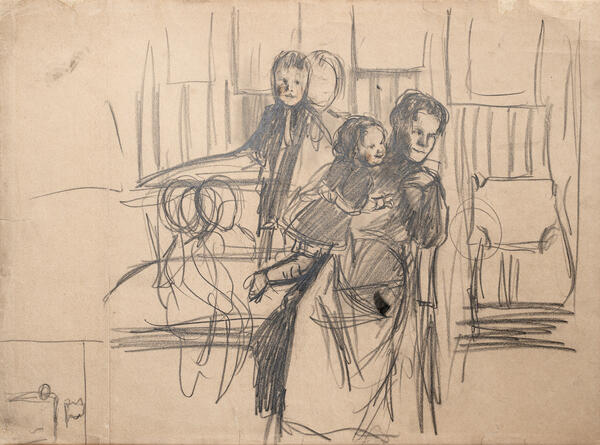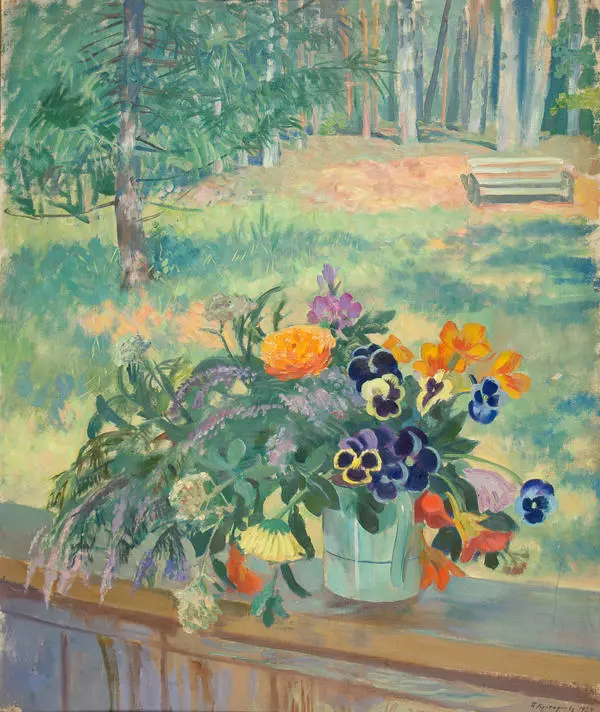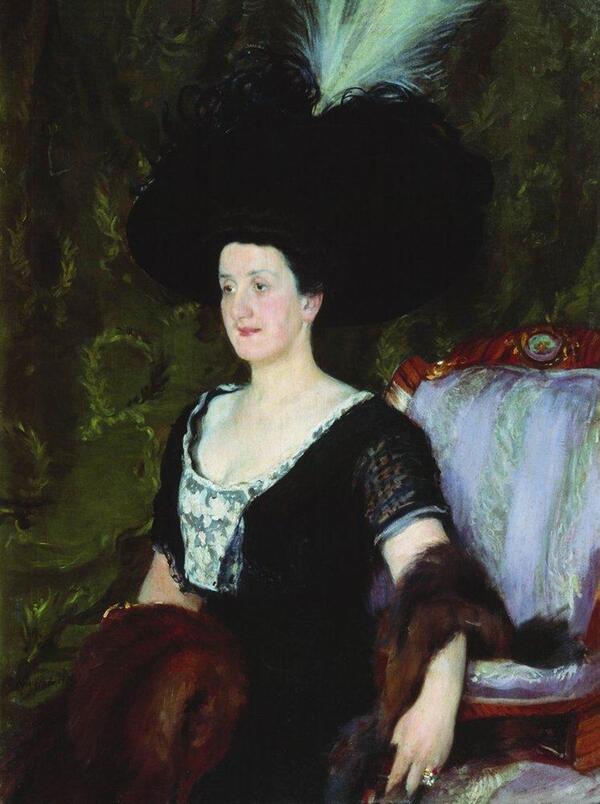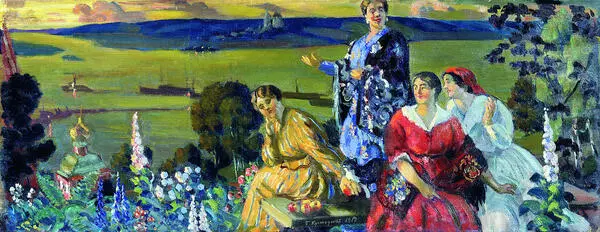The collection of the Boris Mikhailovich Kustodiev House Museum contains a calendar board image “Pilot”, made in watercolor and gouache on paper in 1926. Calendar boards were rectangular cardboard sheets with a printed image in the top section and a tear-off calendar attached to the bottom one. The painter’s legacy included many such calendar boards, depicting workers in red kerchiefs, worker correspondents, peasants, and athletes.
The drawing shows a half-length image of a handsome young man wearing a red shirt with a blue collar, with a numeral 4 on its right side. His blond hair flutters in the wind, and the sharp profile of his courageous face arouses awe and admiration. This is an ideal representative of the new era that gave people “steel wings and instead of the heart — a fiery motor.” Behind the heroic pilot is the square near the Winter Palace, dotted with columns of demonstrators carrying red banners and signs. Back then, the square was named after Moisei Solomonovich Uritsky — a revolutionary and political figure and Chief of the Petrograd Cheka. Up in the sky, planes are seen distributing leaflets. The artist most likely depicted the May Day festivities, which young Soviet airmen always took part in. One of the special qualities of this bright, colorful artwork is its special manner of painting. Multiple tiny strokes of various colors, applied with the finest brush, make the man’s head seem raised, almost sculptural. This vivid, festive work makes the viewer feel elated and triumphant.
The early 1920s were an extremely prolific period for Kustodiev. In 1920, his first and only lifetime exhibition was opened. The exhibition featured about 170 works in various genres and fine art techniques. The exhibition enjoyed great popularity, and this was well-deserved. During this period, the artist actively cooperated with publishing houses, created illustrations for the literary works by Nikolay Nekrasov and Nikolay Leskov and the short stories by Aleksey Remizov, Maxim Gorky, and Yevgeny Zamyatin, as well as worked on posters, book covers and calendar boards.
